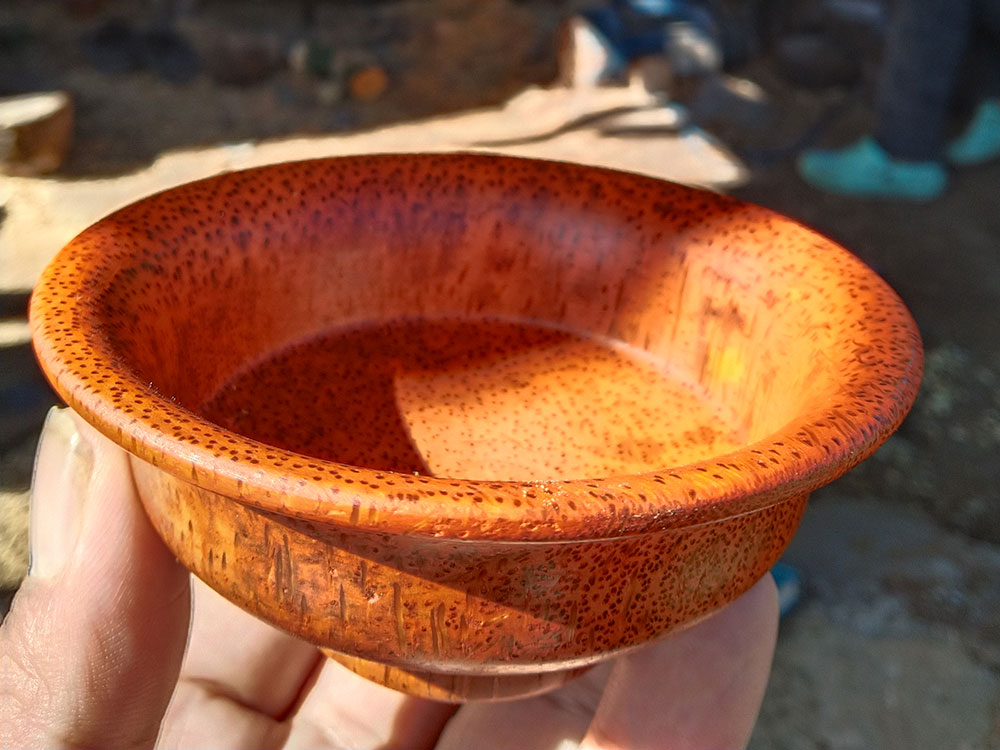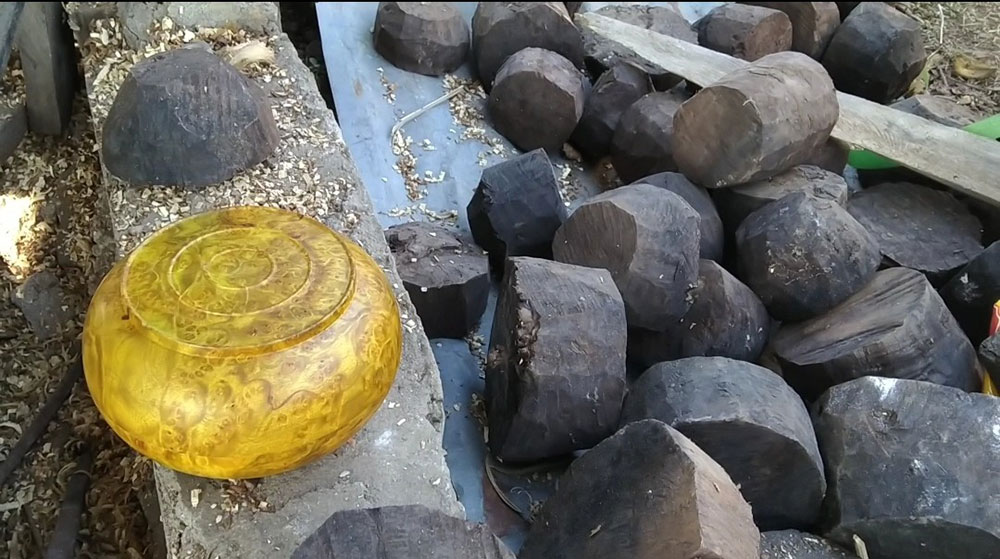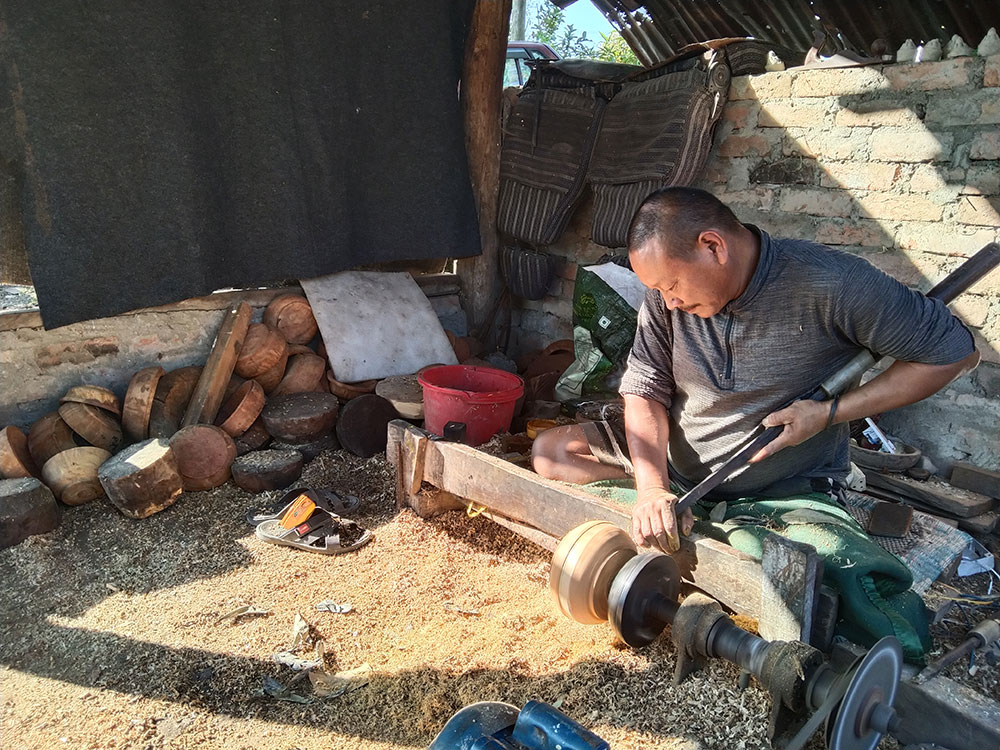Nima | Gelephu
Many have been coming to learn wood carving from the lone shagzop in Shariphu village. However, the art of carving wooden bowls is limited to only one household in the village today.
The 48-year-old Ugyen from Trashiyangtse settled in Shariphu in 2008. There are over 30 households in the village. He is the lone shagzop in Sarpang.
All of his four children have learned woodcarving. However, his children are more interested in agriculture and areca nut farming.
Ugyen said that his children are reluctant to spend weeks and months in the forest far from home in search of dza or bou—wood burls used to make bowls and mugs.

Phobs (cups) are made from bamboo roots
“The lucky ones collect many in a day, but it takes months to get a single dza if you are unlucky. Whetstone to sharpen tools is not easily found. We have to search for days to get one,” said Ugyen.
However, with no other people involved in shagzo, finding dza has become much easier for Ugyen. Villagers inform him when they find one.

Dapa (bowl) is made from dza
When Ugyen reached Singye from Trashiyangtse, the woodcarving skills he learned from his neighbour in his childhood days helped him earn a decent living in the new place.
Today, the 48-year-old earns both from woodcarving and selling areca nuts.
“Making dapa was the only skill I had banked on when I reached here. Areca nut trees take almost eight years to start fruiting. It was more convenient to continue doing what I learned in my childhood during the initial days here,” said Ugyen.
Tarayana Foundation has also helped the man find a market in the country. Before the lockdown, Ugyen travelled to Punakha and Wangdue to sell dapa (wooden bowls) and phorbs (wooden cups).
He sells over 25 pairs of wooden bowls and mugs in a day. The minimum cost of a wooden bowl is Nu 500. Cups go for Nu 300.
Ugyen said that he wants to train youth in shagzo but many are reluctant because woodcarving involves blacksmithing too.
For Ugyen it is a good business and he doesn’t have to worry about a market for his goods.
It is 9:30am and people from the gewog and dzongkhag have gathered in the small temporary shelter near Ugyen’s house. Ugyen is busy making a cup out of a bamboo root. He can make five such cups before breakfast time.
Cups made out of bamboo roots have become popular in the dzongkhag.
Stacked nearby is a pile of dzas.
“It is a profitable business, and sustainable too,” said Ugyen.
Edited by Jigme Wangchuk


